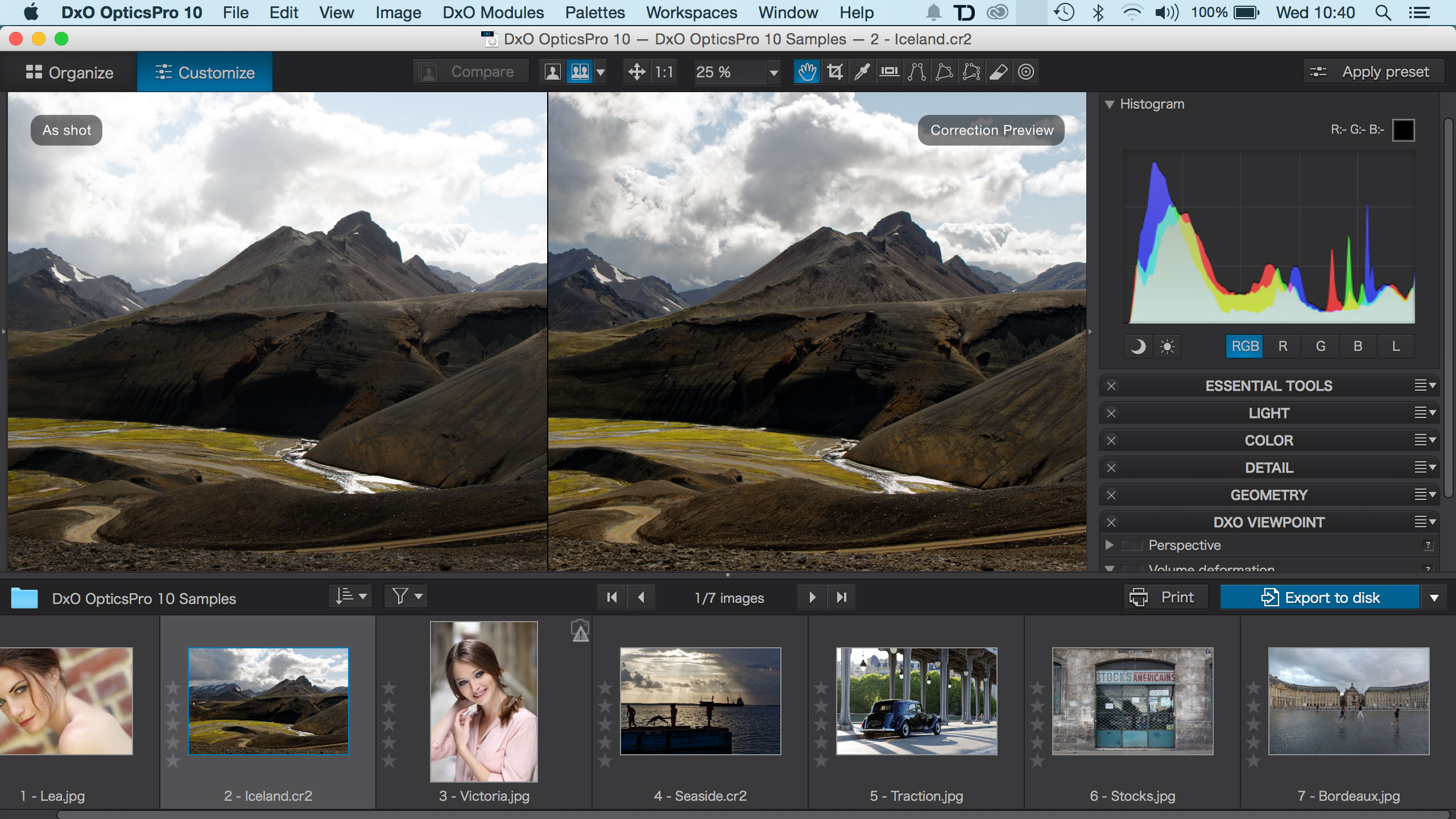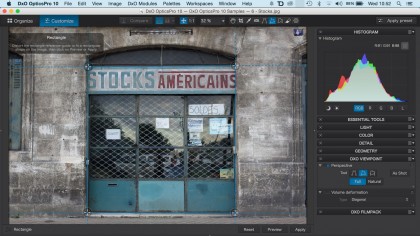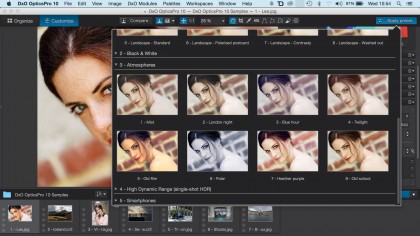DxO Optics Pro 10 brings less noise and clearer skies
DxO Optics Pro 10 doesn't just correct your photos, it corrects your camera and lenses too

Cameras aren't perfect, lenses aren't perfect. You can put up with it, or dig deep and buy better ones. Or you could take a different route, using DxO's lab-developed correction profiles to correct image flaws digitally in DxO Optics Pro.
Optics Pro checks the EXIF data embedded automatically in your pictures to identify the camera and lens used, then looks them up in its database of correction profiles, which has now hit 20,000 camera-lens combinations, with new cameras and lenses being added all the time.
It uses these profiles to correct all the flaws associated with that camera-lens combination, automatically, and the transformation is often startling.
Optics Pro is also a raw converter, and uses the extra data in raw files to correct contrast, lighting, colors and more. This is where the new ClearView tool fits in – it detects distance haze in landscape shots, or smog in urban environments, and uses local adjustments to restore contrast and color. There's no need for selections, masks or graduated filter tools because the analysis and correction is done automatically.
DxO has also improved its PRIME noise reduction tool. This is used to smooth out high ISO shots while preserving detail and textures – this is where most noise reduction tools really struggle. Previously, PRIME worked really well, but it was slow – often taking several minutes to process a high-resolution image. DxO claims it's now four times faster.
But to get these new features, you'll need to get the more expensive DxO Optics Pro Elite edition. Optics Pro has always come in these Essential and Elite versions, but in the past the tools were the same in both and you only needed the Elite version for high-end or professional cameras.
The system has changed in Optics Pro 10. Now, all cameras are supported in both versions, but the Essential edition lacks some of the more advanced tools.
Get daily insight, inspiration and deals in your inbox
Sign up for breaking news, reviews, opinion, top tech deals, and more.
The Essential edition does benefit from the other enhancements in Optics Pro 10, however, including a claimed 10x faster startup time and 1.5x speed increase in use. DxO's Smart Lighting system has been improved so that it still brings out the shadows and highlights in your pictures, but with better automatic corrections and sharper looking detail.
Straighten up with ViewPoint 2.5
That's not the only new release from DxO. The company has also announced version 2.5 of its ViewPoint application. This is a standalone program for correcting lens aberrations automatically and also fixing perspective issues like converging verticals and slanting skyscrapers.

It also fixes a thing called volume deformation. Never heard of it? You'll have seen it plenty, though, when someone is near the edge of the frame in a picture taken with a wideangle lens. It's what makes their head look oddly elongated.
DxO is very serious about optical corrections, as you'll have gathered, and you can buy and use ViewPoint 2.5 without Optics Pro, though it does now integrate fully with Optics Pro 10 as a plug-in, appearing in the sidebar in its own panel. ViewPoint 2.5 also works as a plug-in for Elements, Photoshop, Lightroom and Aperture.
Go analog with FilmPack 5
DxO's third announcement is FilmPack 5, a new version of its film simulation program. Version 5 adds 16 new analog film renderings, with classic films like Fuji Neopan 400 and Kodak Portra 400. These film simulations are created using laboratory analysis of real films and subjects to reproduce the grain, quality and style of the original film.

Like ViewPoint 2.5, FilmPack 5 can be used both as a standalone program and as a plug-in within DxO Optics Pro. It now supports RAW files and can apply DxO lens corrections automatically. A new Micro-contrast tool can give your subjects more definition and clarity, and the interface has had a redesign too.
Like DxO Optics Pro 10, FilmPack 5 is available in both Essential and Elite versions. Plug-in versions for Elements, Photoshop, Lightroom and Aperture should arrive mid-November.
What does it cost?
DxO Optics Pro 10 Essential will cost £99/US$129/AU$145, while the Elite version goes on sale at £159/£199/AU$224.
DxO Viewpoint 2.5 will cost £59/US$79/AU$89, while FilmPack 5 Essential is £59/$US79/AU$89 and FilmPack 5 Elite is £99/US$129/AU$145.
But DxO is running a special offer through to November 25 2014 where you can get all three programs at a reduced price. The Essential Photo Suite (DxO Optics Pro 10 Essential, ViewPoint 2.5, FilmPack 5 Essential) will cost £149/US$189/AU$213, while the Elite Photo Suite (DxO Optics Pro 10 Elite, ViewPoint 2.5, FilmPack 5 Elite) will cost £229/US$289/AU$326.

Rod is an independent photographer and photography journalist with more than 30 years' experience. He's previously worked as Head of Testing for Future’s photography magazines, including Digital Camera, N-Photo, PhotoPlus, Professional Photography, Photography Week and Practical Photoshop, and as Reviews Editor on Digital Camera World.